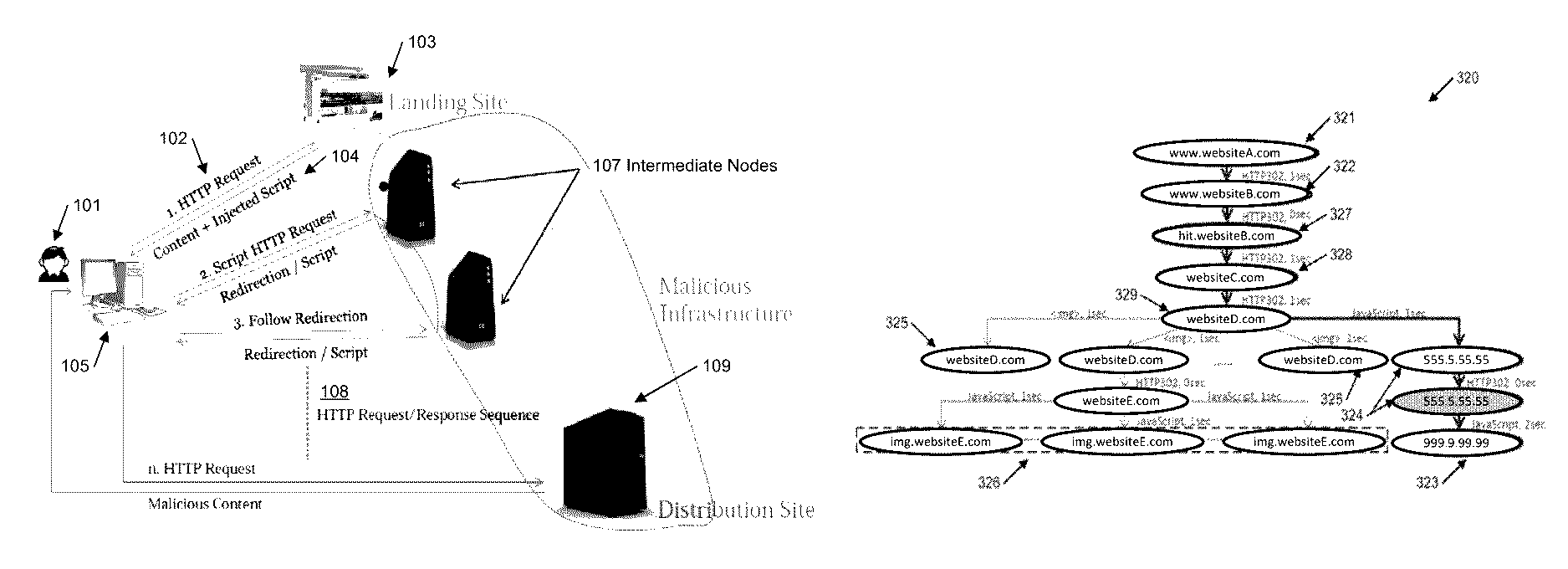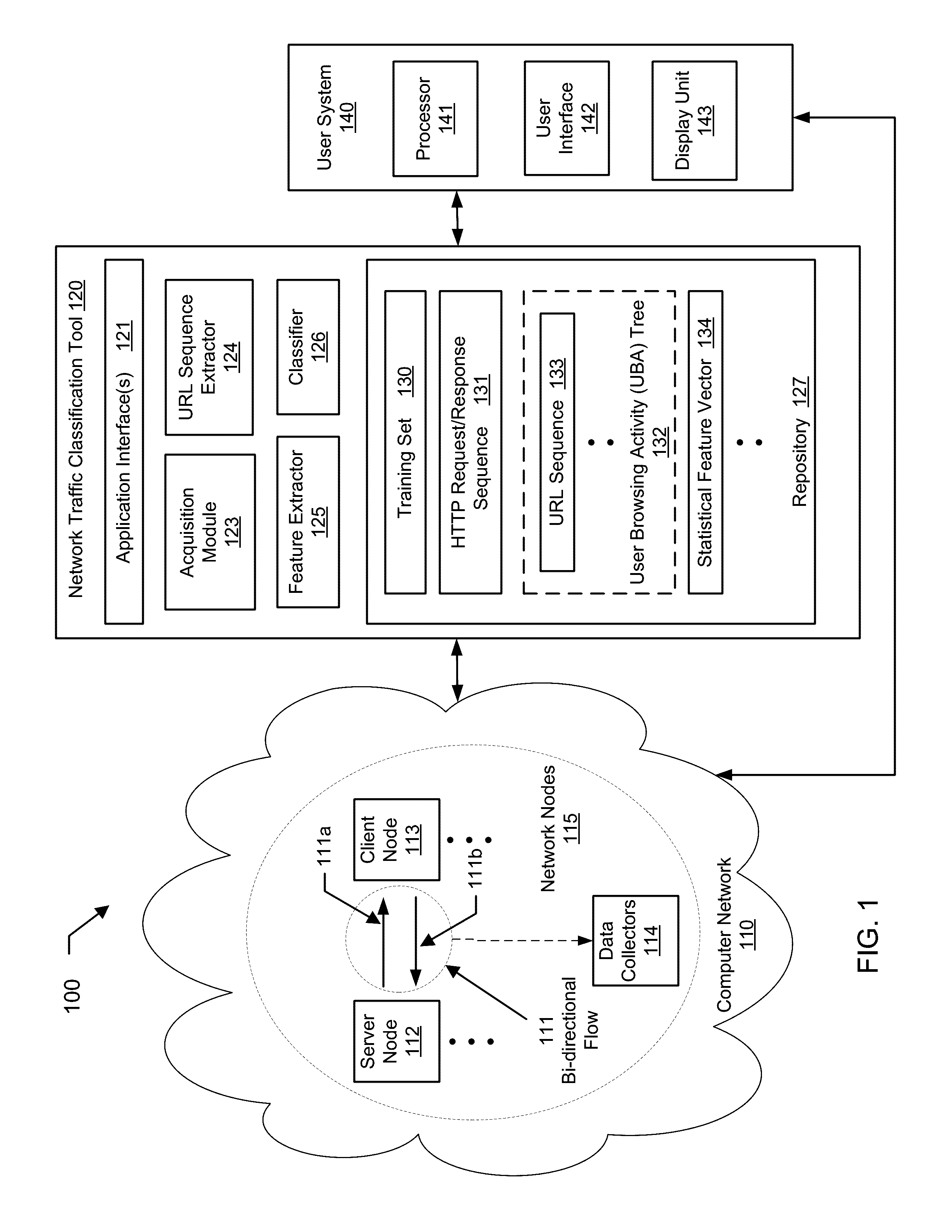Detecting malicious HTTP redirections using user browsing activity trees
a technology of activity trees and redirections, applied in the direction of instruments, computing, electric digital data processing, etc., can solve the problems of inability to detect malicious status of infected hosts, the strategy is susceptible to cloaking or anti-emulation mechanisms employed, and the redirection of malicious scripts to users
- Summary
- Abstract
- Description
- Claims
- Application Information
AI Technical Summary
Benefits of technology
Problems solved by technology
Method used
Image
Examples
Embodiment Construction
[0011]Specific embodiments of the invention will now be described in detail with reference to the accompanying figures. Like elements in the various figures are denoted by like reference numerals for consistency.
[0012]In the following detailed description of embodiments of the invention, numerous specific details are set forth in order to provide a more thorough understanding of the invention. In other instances, well-known features have not been described in detail to avoid obscuring the invention.
[0013]The web (or “World Wide Web”) is a system of interlinked hypertext documents (i.e., web pages) accessed via the Internet using URLs (i.e., Universal Resource Locators) and IP-addresses. The Internet is composed of machines (e.g., computers or other devices with Internet access) associated with IP-addresses for identifying and communicating with each other on the Internet. The Internet, URL, and IP-addresses are well known to those skilled in the art. The machines composing the Inter...
PUM
 Login to View More
Login to View More Abstract
Description
Claims
Application Information
 Login to View More
Login to View More - R&D
- Intellectual Property
- Life Sciences
- Materials
- Tech Scout
- Unparalleled Data Quality
- Higher Quality Content
- 60% Fewer Hallucinations
Browse by: Latest US Patents, China's latest patents, Technical Efficacy Thesaurus, Application Domain, Technology Topic, Popular Technical Reports.
© 2025 PatSnap. All rights reserved.Legal|Privacy policy|Modern Slavery Act Transparency Statement|Sitemap|About US| Contact US: help@patsnap.com



